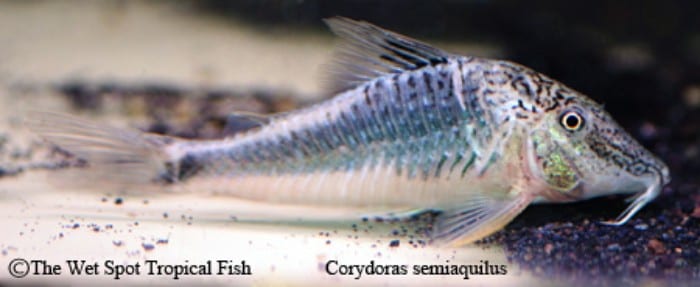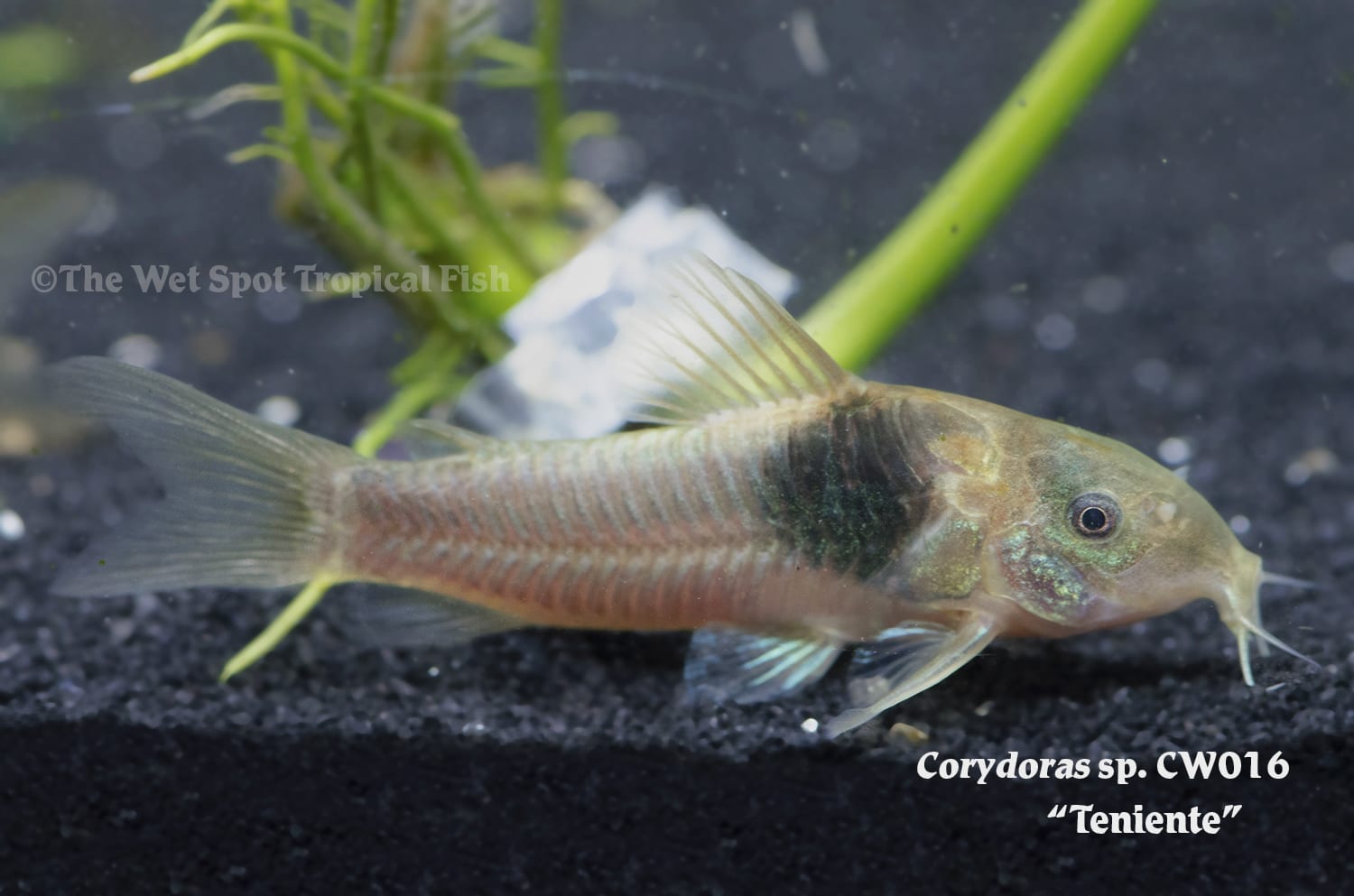A Bipartisan Option
A Bipartisan Option
In a world ripe with dichotomies everyone seems to have a stance on everything. When it comes to pets, there are dog people and cat people. Fish, however, most often occupy a middle ground, with compromises abound for all all animal lovers. Perfectly representing this bipartisan sentiment are a group of armored Catfish known as Cories. Like cats, they have whiskers, tough exteriors, and have been known to scratch those who get too close. Like dogs, they are peaceful, social, and spend their days with their noses to the ground in search of tasty morsels. Hailing from South America, this fascinating genus of small catfish exhibits bony plates on their flanks, lungs to gulp atmospheric oxygen, and use sensitive barbels around their mouths to forage through soft substrate. Some of our favorite Cory friends include Corydoras fowleri, Corydoras semiaquilus, and Corydoras sp. “CW016″.
Scientific NameCorydoras fowleri
Common NameHuanta Cory
Temperature / pH68 to 82°F / 5.0 to 7.0 pH
Native LocationPeru
Preferred DietSinking foods
Found scouring sandy bottoms of small, quiet tributaries of the Amazon River basin in Peru, is C. fowleri. Also known as the “Huanta Cory”, this fish reaches about 3 inches in length at maturity, and sports shimmering golden scales with black facial markings. Preferring clear, acidic waters with fine sand, leaf litter, and dense riparian vegetation, these Cories are relatively hardy in captivity and can tolerate a range of tank setups. They do, however, require fine sand, or very clean gravel substrate, and shady hiding spots. Huanta Cories do best in large community aquaria, and are behaviorally compatible with many other fish species. Males, however, can become aggressive or territorial with conspecifics, and are best kept in single pairs, or groups of 4-6 in larger community tanks. Feasting on a variety of aquatic invertebrates and zooplankton in the wild, this species does best with regular meals of live and frozen fare like bloodworm, brine, and Tubifex in captivity. Down the line, they do well with high quality sinking pellets, though they may need a transitional period before accepting these offerings. Optimal water conditions include temperatures between 68 and 82°F, pH of 5.0 to 7.0, and hardness of 36 to 215 ppm.
Scientific NameCorydoras semiaquilus
Common NameBlack Cory
Temperature / pH71 to 78°F / 6.0 to 7.0 pH
Native LocationPeru
Preferred DietSinking foods
Another Peruvian Prince of the Cory dynasty is C. semiaquilus. More commonly referred to as the “Black Cory”, these demure swimmers are found in the western Amazon River basin. Reaching just over 2 inches in length at maturity, these Cories are indeed shiny black as their common name suggests, with silver bellies and glorious whiskers. This species perfectly embodies classic Cory behavior, and habitat requirements. They do best in tanks with soft, sandy substrate with lots of shady hiding spots like rock outcroppings or caves, floating plants, or other furnishings up to the discretion of the aquarist. Black Cories must be kept in groups of at least 6 conspecifics, and are incredibly peaceful. Compatible in just about any community tank that does not include predators of fish their size. Opportunistic omnivores in nature, feeding on any tasty invertebrate they can get their barbels on, these Cories can be fed sinking pellets, granules, and high quality flake supplemented by regular live and wormy frozen meals. Tank waters should be maintained with temperatures of 71 to 78°F, pH between 6.0 and 7.0, and hardness between 7 and 85 ppm.
Scientific NameCorydoras sp. “CW016”
Common NameTeniente Cory
Temperature / pH71 to 79°F / 6.0 to 7.2 pH
Native LocationPeru
Preferred DietSinking foods
Last, but certainly not least on today’s Cory lineup, is the rare and largely undescribed C. sp. “CW016”. Known fondly as the “Teniente Cory”, which translates to Lieutenant Cory, this armored fish is strikingly proper. Reaching 2.5 inches in length at maturity, this Cory exhibits bronze and black spots and fins. Best kept in aquaria with soft sand, these small catfish dig through substrate with their soft barbels, and any course material may damage these sensory organs. Beyond substrate, the only strict tank requirement is shade and hiding places. Boisterous and exciting to watch, these fish show their best personalities in shoals of 6 or more, and can be kept alongside any number of community species that does not want to make a snack of them. Feeding under normal Cory parameters, this species is not terribly picky, and will happily gulp high quality pellets, granules, and flakes, and will voraciously munch any live or frozen offerings from their benevolent stewards. Water conditions should be maintained with temperatures between 71 and 79°F, pH of 6.0 to 7.2, and hardness of 14 to 178 ppm.
Every topic needs a middle ground. While compromise has become a bit of a derogatory term in our modern political climate, that doesn’t mean the concept shouldn’t extend to choosing our pets. Pick some fish the cat people and dog people in the family can enjoy, and give The Wet Spot a call today!


